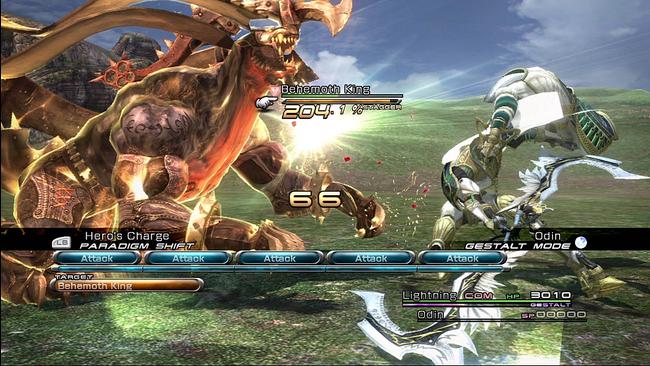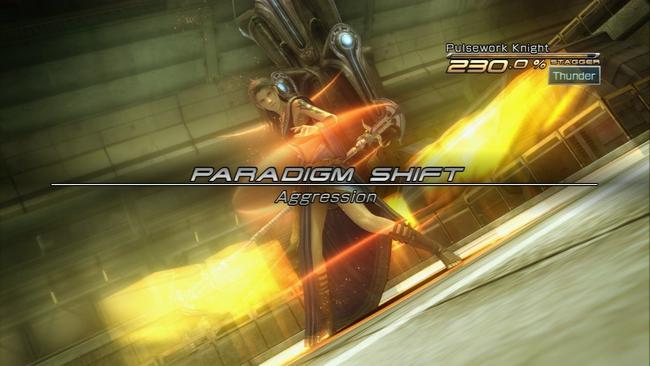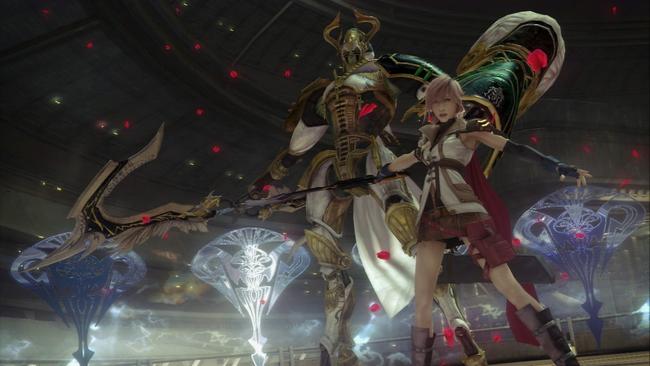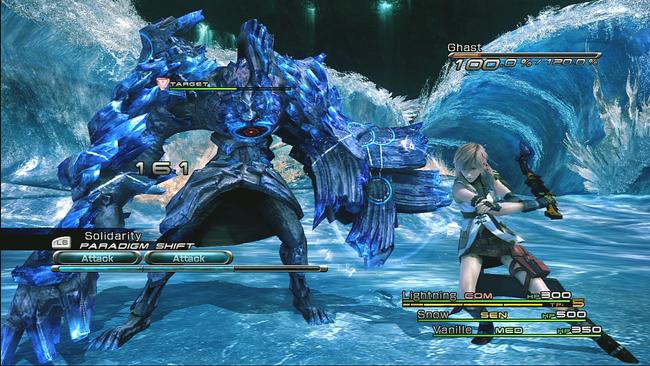
Final Fantasy XIII’s combat continues to influence the series
Approaching the final hours of Final Fantasy XVI, I found myself preoccupied with an earlier game in the series - Final Fantasy XIII. Some of the criticisms levied against XVI’s combat, side quests, and level design all reminded me of criticisms of XIII from back in 2010. The complaints echo in strange ways.
For example, one of the more controversial aspects of XVI - its pivot towards purer action-based combat in lieu of the turn-based hybrid models embraced by the series in earlier entries - raised complaints that seemed like the inverse of critics calling XIII’s combat and gameplay too “slow” or “disengaged”. In retrospect, Final Fantasy XIII built upon the series’ fabled Active Time Battle system to create an innovative and strategic combat mechanic that continues to exert influence over the mainline series.
Final Fantasy XIII’s release in 2010 marked the series’ transition from the PlayStation 2 to the PlayStation 3 and Xbox 360 console era. XIII hit many technical milestones on a new console, yet was widely criticized for some elements of game design, including linear structure, confusing world-building, and bucking of gameplay conventions then considered “essential” for RPGs to have. Despite these criticisms, XIII’s biggest strength lies in its battle system.

Prior to 2001, although style and other mechanics varied significantly, combat in the Final Fantasy series was largely static. The series, up through Final Fantasy IX, largely utilized iterations of the ATB system introduced in 1992’s Final Fantasy IV. The PlayStation 2 era brought some changes, first with Final Fantasy X, which substituted the ATB for a conditional turn-based system that displayed character turn order on-screen, with battle strategy revolving around changing that order with items and actions. Final Fantasy XII tasked players with micromanaging the party from through the Gambit system. Rather than issue specific commands, players would devise specific rulesets and if/then computations to determine when and how to use actions, items, and abilities. During combat, the computer-controlled characters would act in accordance with the rules in place, allowing players to be as complicated as they saw necessary.
After XII’s foray into MMO-inspired battles, XIII hits the sweet spot between the series' hallmark ATB combat and the dazzling action of the Final Fantasy VII Advent Children film and later games in the series. Using the command synergy battle system allows players to designate combinations of the following six job/class type to the party:
- Ravager (magical attacks to spike up the stagger gauge);
- Commando (physical attacks to maintain the stagger gauge);
- Synergist (buffs to allies)
- Saboteur (debuffs to enemies)
- Medic (healer)
- Sentinel (tank)

Players assign roles to each member, with each set of roles called a Paradigm. Players can shift between Paradigms to switch roles mid-combat, selecting abilities designed to stagger the enemy, rendering them susceptible to extra damage. During battle, players control the team leader as the ATB bar fills. Players can auto-battle or select individual abilities, shifting paradigms to buff, debuff, heal, or simply to spike the stagger gauge with magical attacks or maintaining the bar with physical ones. The Stagger mechanic has proved quite durable, showing up in every mainline single-player Final Fantasy game since XIII, to varying degrees of prominence.
Whereas Final Fantasy XII focused on having players micromanaging the party (be it through detailed commands or in-depth Gambit construction), XIII does the opposite and focuses on macro management of the entire party, shifting duties to respond to any particular need in combat: a party low on health can employ one to three medics for quick heals, while others may start a battle with a Synergist/Saboteur combo to buff the party while weakening enemies. The game rewards innovative combat styles, issuing a rating after battle which influences Crystarium Points and items awarded.

The end result is combat which is fast-paced, high-octane, and visually impressive. Yet it does so while still demanding planning, quick thinking, and even quicker button presses. While XII asks players to concern themselves with minute details, XIII demands a step back and analysis of the situation. The direct sequels to XIII first tinker with this system in XIII-2 before shifting altogether into a hybrid of combat systems between XIII-2 and X-2. Likewise, the combat system in XIII is appreciably different from its successors, who have continued a paradigm shift of their own towards action - including the most recent entry, Final Fantasy XVI.
The combat in the two games could not appear to be more different: XIII tasks players to macro-manage a group, while XVI is focused entirely on Clive. XIII revels in elemental weaknesses and status effects, both of which are missing in XVI. Yet the defining system behind XIII’s combat system - the stagger mechanic - has been adopted in both Final Fantasy VII Remake and Final Fantasy XVI. Shifting between Eikon stances to utilize particular offensive or defensive abilities feels very similar to shifting between Ravager and Commando paradigms.

Playing through XVI reminds me of some criticisms levied against XIII at the time, including allegations of linearity or qualms regarding the battle system. XVI is able to avoid some of XIII’s issues with better pacing and doling out of the game’s systems. Both games feature incredible combat against a backdrop of gorgeous locales. Yet where XVI boasts visually dazzling combat, XIII does so in equal measure of spectacle and strategy. As the Final Fantasy series looks towards XVII and onwards, the combat of Final Fantasy XIII should be recognized for the influence it continues to have on the series.